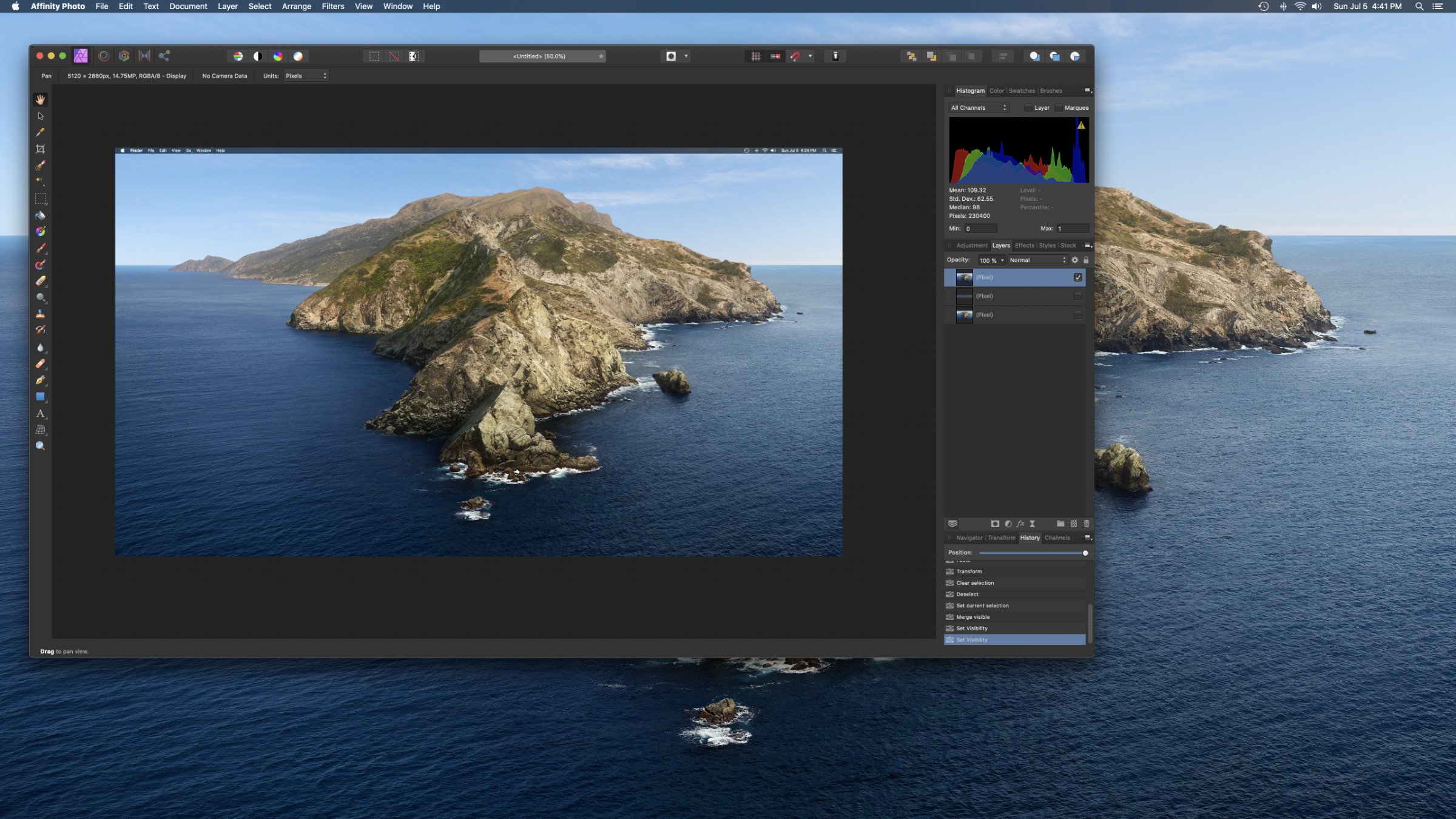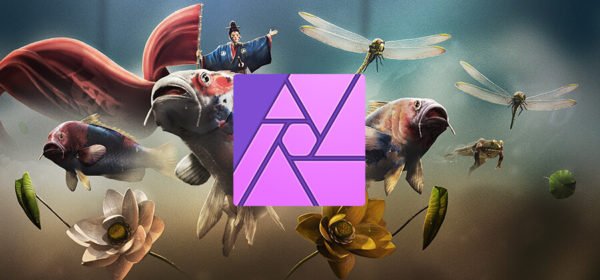

- #AFFINITY PHOTO UPDATE#
- #AFFINITY PHOTO SOFTWARE#
- #AFFINITY PHOTO SERIES#
- #AFFINITY PHOTO MAC#
- #AFFINITY PHOTO WINDOWS#
You can edit away to your heart’s content in the Develop persona, move to the Photo persona to do some compositing, and then back to the Develop persona to make further tweaks. With Affinity 2, this process is completely non-destructive. In the process, you normally lose a lot of the information a RAW file contains, so although it’s possible to re-edit further down the line, it will never quite match what you can do with the original file. If you’re familiar with the way Photoshop works or the previous version of Affinity Photo, you’ll know that the usual workflow for photo-editing apps is that you open your RAW file, edit in Camera Raw or the Develop persona and then bring it into the main application for more advanced edits. The only things you’ll really need to get to grips with are the new features, with the biggest being Affinity Photo 2’s ability to develop RAW files in a non-destructive manner.
#AFFINITY PHOTO SOFTWARE#
The icons have a new look and Affinity has made some usability tweaks but, if you’ve used the software before, there isn’t a big learning curve here. Your main tools palette is located on left, with inspector panels on the right. The layout is largely similar, with five “personas” split into “Photo”, the RAW “Develop”, “Export, “Liquify” and “Tone-Mapping” workspaces, which are all accessible via buttons in the top left corner. The biggest upgrade, if not the most useful, is that the whole Affinity Photo UI has got an upgrade. READ NEXT: The best photo-editing applications to buy Affinity Photo 2 review: Design and new features Last, but by no means least, if you don’t want to spend any money you could always give GIMP a try (it doesn’t cost anything), but it isn’t intuitive to use and good results aren’t as easy to achieve, either. It isn’t as powerful as either Photoshop or Affinity and, while it’s competent, you may not get on with its hand-holding approach. It would also be remiss of me not to mention Photoshop Elements, Adobe’s beginner photo-editing software which is available for a one-off cost of £90. It’s recently gone down the monthly subscription route, too, with prices starting at £8 per month or £129 for a lifetime licence.ĪCDSee is another Lightroom wannabe and pricier than Affinity at $100, but I’ve found it more fiddly than Adobe’s tools and not as powerful an editor as Affinity.
#AFFINITY PHOTO WINDOWS#
However, I’ve had mixed results with it in the past, with performance issues on Windows machines in particular. Skylum’s Luminar software is more of a Lightroom-type tool, combining editing abilities with image library facilities and some snazzy AI-driven processing tools.

I’ve not come across a better rival to Photoshop than Affinity as a standalone photo editor, but there are plenty on offer. It’s a lot cheaper, though, with Photoshop on its own costing £20 per month (including 20GB of cloud storage) and the Photography Plan with Lightroom and Photoshop (but only 2GB of cloud storage) costing £10 per month. It’s the photo-editing gold standard and a behemoth of an application that has been at the forefront of this particular space for decades.Īffinity can’t quite match Photoshop for the sheer breadth of tools on offer and it can’t match Photoshop’s cloud connectivity or workflow tools, either.

The most obvious alternative to Affinity Photo is Photoshop.
#AFFINITY PHOTO SERIES#
And, to be fair, it is softening the blow with a series of tempting offers.Īffinity Photo 2 review: Price and competition
#AFFINITY PHOTO UPDATE#
Still, with the original launching seven years ago, it’s perhaps a bit much to ask Serif to continue to update its image-editing software forever. READ NEXT: The best photo-editing applications to buy Affinity Photo 2 review: What you need to know It isn’t exactly the swingeing monthly subscription prices Adobe charges, but it nonetheless means owners of the original Affinity Photo won’t receive new features in future. The appeal of using Affinity over Photoshop is the low price and the fact that you don’t need to pay a monthly subscription to access the software – you pay once and you get to use the software in perpetuity.Įxcept that, cap in hand, the developer Serif is now asking users to pay up in order to access new features. New versions usually come with big new features and potentially new ways of working with images. When Affinity announced version 2 a few months back, however, I experienced mixed emotions.
#AFFINITY PHOTO MAC#
I’ve been using Affinity Photo on and off for a few years now, across Windows and Mac machines as well as my iPad, and I can honestly say I’d be happy using it if my work licence of Adobe Photoshop expired tomorrow.


 0 kommentar(er)
0 kommentar(er)
